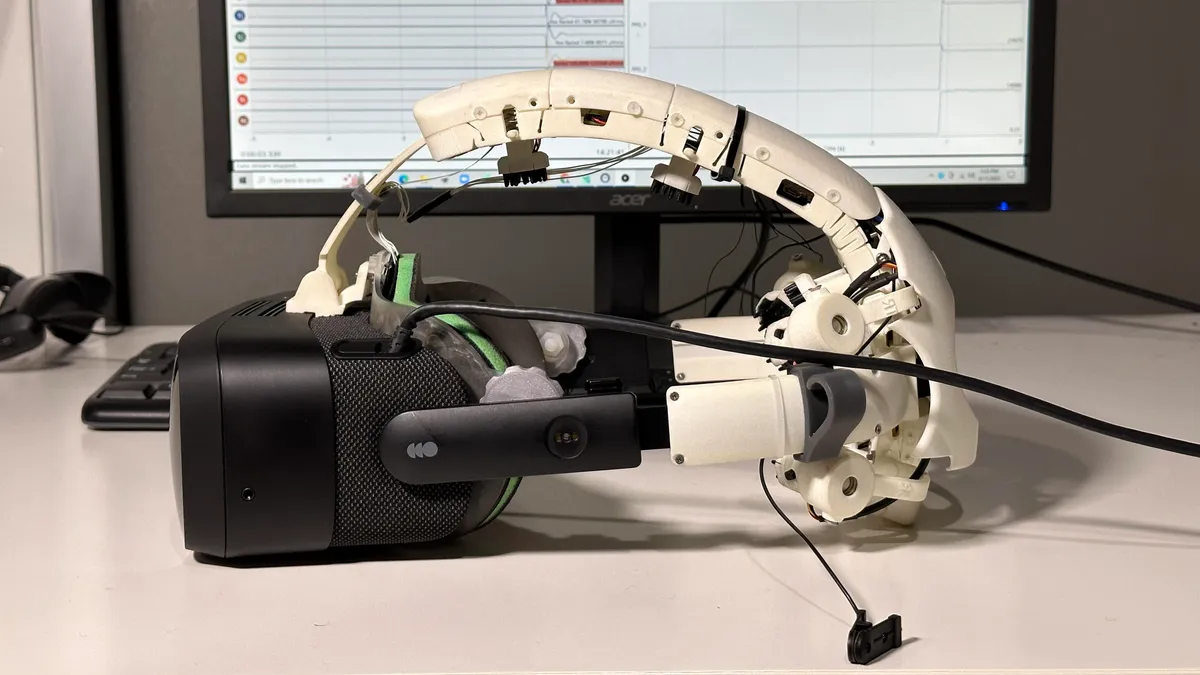The fusion of augmented reality (AR) and virtual reality (VR) technologies has revolutionized the way we experience and interact with digital content. These immersive technologies have the power to transport us to virtual worlds, overlay digital information onto our physical surroundings, and enhance our understanding of the world around us. One of the latest advancements in this field is the development of brain-connected AR-VR headsets, which have the potential to completely transform our perception of reality. In this article, we will explore the future implications of wearing a brain-connected AR-VR headset and the possibilities it opens up for users.
Read More: Double Solar Storms Set to Strike Earth, Triggering Spectacular Widespread Auroras
A New Sensor Platform for VR and AR
Traditional AR and VR headsets rely on external cameras and sensors to track the user’s movements and position in space. However, brain-connected AR-VR headsets take this technology to a whole new level by integrating sensors that directly interface with the user’s brain activity. These headsets utilize electroencephalography (EEG) sensors to detect and interpret the electrical signals generated by the user’s brain. By analyzing these signals, the headset can understand the user’s intentions and respond accordingly, creating a seamless and intuitive user experience.
Accessibility Goals
One of the primary advantages of brain-connected AR-VR headsets is their potential to enhance accessibility for individuals with physical disabilities. Traditional VR and AR systems require users to interact with physical controllers or perform specific gestures to navigate and manipulate digital content. However, brain-connected headsets eliminate the need for physical input devices, allowing individuals with limited mobility to interact with the virtual world solely through their brain signals. This breakthrough technology has the potential to empower people with disabilities, enabling them to explore new environments, engage in virtual social interactions, and even control external devices using their thoughts.
A Sensor Platform that Could Expand Beyond Headsets
While brain-connected AR-VR headsets offer exciting possibilities for immersive experiences, the underlying sensor platform has the potential to extend beyond headsets alone. The ability to decode and interpret brain signals opens doors to various applications in fields such as healthcare, education, and entertainment. For instance, this technology could be utilized in therapeutic settings to assist individuals with neurological disorders by providing real-time feedback on their brain activity. In the education sector, brain-connected sensors could revolutionize the way we learn, enabling personalized instruction based on the student’s cognitive engagement and understanding.
Moreover, the sensor platform’s potential reaches beyond AR and VR experiences. Brain-connected sensors could integrate with smart home systems, allowing users to control appliances, lighting, and other devices with their thoughts. This seamless integration of brain-computer interface technology with everyday life could significantly enhance convenience and accessibility for all individuals.
Conclusion
The advent of brain-connected AR-VR headsets represents a significant leap forward in the field of immersive technologies. By directly interfacing with the user’s brain activity, these headsets offer a more natural and intuitive way to interact with digital content. Additionally, they hold great promise in terms of accessibility, empowering individuals with physical disabilities to engage with the virtual world on their terms.
Moreover, the underlying sensor platform has the potential to expand beyond headsets, finding applications in diverse fields and revolutionizing various aspects of our lives. As we move forward, the development and refinement of brain-connected AR-VR technology will continue to shape the future of human-computer interaction, making the impossible possible and transforming the way we perceive and engage with the world around us.

